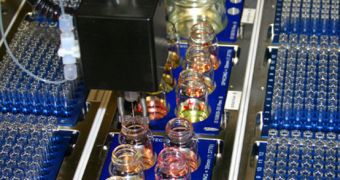Producing a whole subclass of organic compounds called nitrogen-containing heterocycles should now be a lot easier for scientists, thanks to a team of experts based at the California Institute of Technology (Caltech), in Pasadena. Experts here developed a new method for creating complex molecules.
The main application for this work is opening up new avenues of research in chemical and drug manufacturing. Pharmaceutical companies are bound to leap at the opportunity to use these chemicals. Others could use the nitrogen-containing heterocycles to produce new, natural products.
The latter may range from compounds that can be used in chemotherapy to bioactive plant materials, including morphine. All of this was possible before, but only through complex, time- and resource-intensive processes. Now, investigating these classes of chemicals could become a lot easier.
Researchers at Caltech were led by the Ethel Wilson Bowles and Robert Bowles professor of chemistry Brian Stoltz and research scientist Doug Behenna. They used capabilities at the Center for Catalysis and Chemical Synthesis in order to conduct their research.
Their main goal in making this type of reaction easier to accomplish was determining the optimal conditions under which a catalyst could drive it forward at an accelerated pace. The chemical reaction involved is called alkylation.
The reaction involves adding a group of carbon and hydrogen (known as alkyl) to the base compound. Researchers detail the procedure in a paper published in the latest issue of the top scientific journal Nature Chemistry.
“We think it's going to be a highly enabling reaction, not only for preparing complex natural products, but also for making pharmaceutical substances that include components that were previously very challenging to make,” Stoltz explains.
“This has suddenly made them quite easy to make, and it should allow medicinal chemists to access levels of complexity they couldn't previously access. Making carbon-carbon bonds is hard, but that's what we need to make the complicated structures we're aft the investigator goes on to say,” he adds.
The investigator then says that he and his team are working towards developing methods of obtaining carbon-carbon bonds in very difficult scenarios, under improper conditions. What they are trying to obtain is a central carbon group that has four other similar groups attached to it. This is very difficult.
“So not only are we making tricky carbon-carbon bonds, we're also making them such that the resulting products have a particular, desired handedness. This was the culmination of six years of work,” Stoltz concludes.

 14 DAY TRIAL //
14 DAY TRIAL //